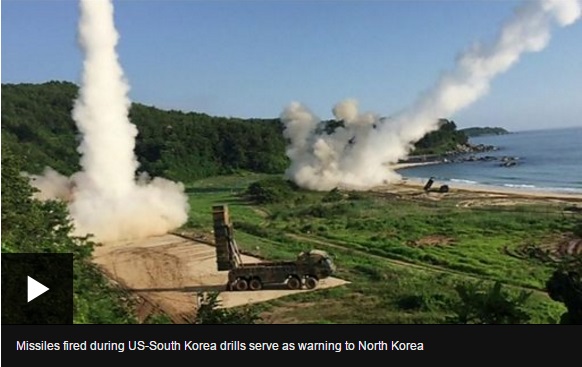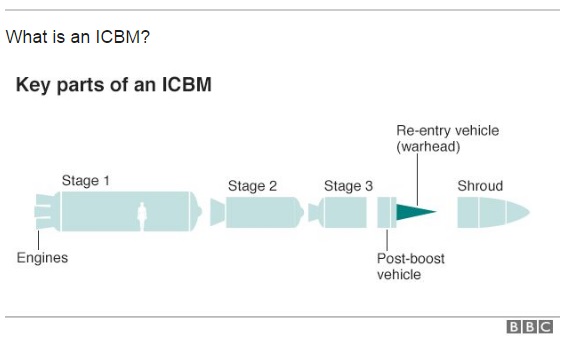
The US and South Korea have held a ballistic missile drill, after North Korea tested a long-range missile experts believe may reach Alaska.
Self-restraint was "all that separated armistice and war" and could be changed at any time, the two allies said.
It would be a "grave mistake" for the North to think otherwise, they said.
China and Russia have urged the North to suspend its weapons programme in exchange for a halt to US-South Korean military exercises.
The launch, the latest in a series of tests, was in defiance of a ban by the UN Security Council.
The US has asked for an urgent meeting of the UNSC to discuss the issue. A closed-door session of the 15-member body will take place later on Wednesday.
Pyongyang claimed on Tuesday to have successfully tested an intercontinental ballistic missile (ICBM).
However, most experts believe that the North does not yet have long-range nuclear weapon capabilities.
The two Koreas are technically still at war as the 1950-1953 Korean War ended in an armistice.
How have the US and South Korea responded?
The allies conducted a ballistic missile fire exercise in the Sea of Japan.
South Korean President Moon Jae-in said the allies needed to demonstrate their missile defence posture "with action, not just a statement", his office said.
Meanwhile in a joint statement Gen Vincent Brooks, commander of US forces Korea, and South Korean Joint Chiefs Chairman Gen Lee Sun-jin said the allies were maintaining patience and self-restraint, but this could change.
"We are able to change our choice when so ordered by our alliance's national leaders. It would be a grave mistake for anyone to believe anything to the contrary," it said.
Earlier, US Secretary of State Rex Tillerson called North Korea's move a "new escalation of the threat" and warned that Washington "will never accept a nuclear-armed North Korea".
Mr Tillerson said "global action is required to stop a global threat" and warned that any nation that provided economic or military benefits to the North, or failed to fully implement UN Security Council resolutions, was "aiding and abetting a dangerous regime".

- A long-range missile usually designed to carry a nuclear warhead
- The minimum range is 5,500km (3,400 miles), although most fly about 10,000km or more
- Pyongyang has previously displayed two types of ICBMs: the KN-08, with a range of 11,500km, and the KN-14, with a range of 10,000km, but before 4 July had not claimed to have flight tested an ICBM. It is not clear what differentiates the Hwasong-14

